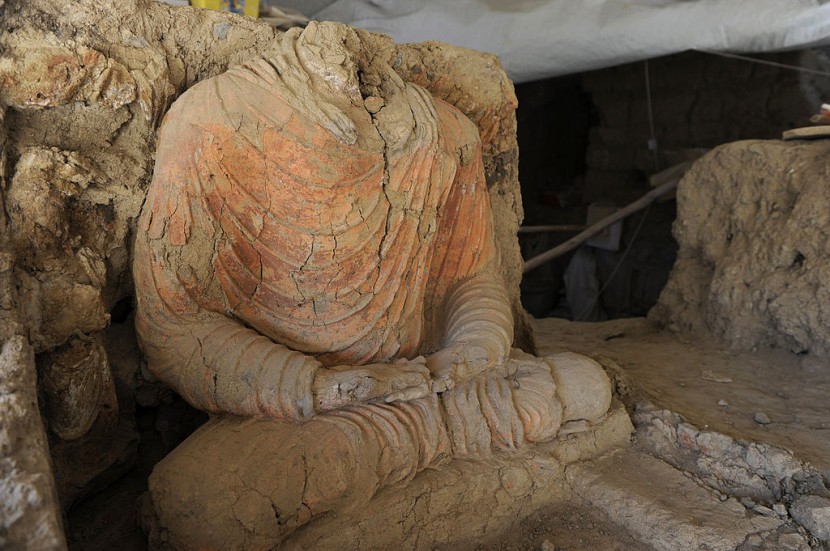
Two oldest Buddha found in China is one of the oldest discovered artifacts so far. They were retrieved from a Han Dynasty tomb as a milestone in the history of Chinese Buddhism.
This pair of statues which is made of copper, is dated to 2,200 years and is thought to be the oldest ones in China. They are part of a haul of ancient artifacts uncovered from several tombs that belonged to the Eastern Han Dynastic period in Chinese history.
Oldest Buddha discovered in China
As one of the statues, Shakyamuni is shown with Buddha on a platform wearing a long cloak. The other statue highlights the five great Buddhas called the Five Tathāgatas, reported in the Daily Mail.
Compared to other Buddha sculptures seen before, these figurines are over two centuries old. The artworks are made in the Gandara style, an expressive style that was developed in northwestern Pakistan and eastern Afghanistan. These statues were made between the 1st and 7th century-based assessments.
Archeological digs in the northwestern Shaanxi Province were the source of the two statues. Shaanxi is located in Central China, where the fantastic find of Terracotta warriors, one of the most prominent ancient Chinese discoveries in the '70s, cited History.
According to CGTN, the digs were done from June 2020 to November 2021, ending in the uncovering of 3,648 archaic tombs built in the era of the Warring States to the Qing Dynasty that lasted until 1911. These oldest Buddha that was unexpectedly found in the Han Dynasty tomb should lead to something else.
Li Ming, the lead of the project in the excavation, called the Hongduyuan cemetery in North Chang'an, Xi'an. It was the ancient capital of the Han and Tang dynasties and was equal to the emperor's mausoleum back then.
After going over all the tombs found in the cemetery, the scientists discovered them to be the last resting place of the emperor's kin, senior official, and dignitaries listed in the historical records.
Artifacts found in the Shaanxi dig
Along with the two buddhas that are the star artifacts taken, several 16,000 sets of relics from 2,200 years ago represent treasures from China's storied past.
The height of the Shakyamuni figurine is about four inches high, the Five Tathāgatas that is supposed to lie flat us six inches. Both figurines are made of copper, tin, and lead alloy.
Tathāgatas show the transcendent Buddhas characterized by the Aksobhya, Amitabha, Amoghasiddhi, Ratnasaṃbhava, and Vairocana.
The Shakyamuni is a traditional form of Buddha of this type, and the figure is described with one bowl in hand and one reaching for the earth. Shaanxi Academy of Archaeology led the digs, and added the carved figurines are part of the Buddhism beliefs that did not exist until the era of the Sixteen Kingdoms.
The founder of the religion, Gautama Buddha, is speculated to have originated the belief between the 600 to 400 B.C. epoch. Buddhism has no scriptures. Instead, the rules on how to conduct as a follower were transmitted by oral records. But in the 2nd century B.C., the first written records were noted.
Another site was discovered by scholars and subsequently studied by them, and there were instances of the class involved in these burials. The oldest Buddha found in a Han Dynasty tomb represents a significant discovery, adding more to what is known.
Related Article : Chinese Ancient Lion City Submerged in Man-made Lake in the '50s; Archaeologists Likened Ruins to Atlantis








